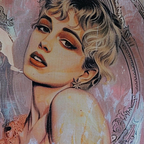The Intersection of Myth and Psyche: A Jungian Interpretation of Twin Flames
Part One
The Call Of The Archetype: Awakening The Inner Self
Archetypes speak to the deepest parts of our minds. They are patterns that show up in stories and myths across cultures. Carl Jung saw them as vital pieces of our shared human experience.
The persona is the mask we wear to fit into society. But beneath it lies our true self. This inner self holds our purpose and connects us to something bigger.
Many people feel a pull to look within. This urge often comes at key moments in life. It might be after a big change or during a time of soul-searching.
Exploring archetypes can spark self-discovery. As we learn about these ancient patterns, we may see parts of ourselves in them. This can help us understand our own thoughts and actions better.
The journey inward is both personal and universal. While each path is unique, we tap into the collective consciousness. This shared pool of human wisdom guides us.
Some see this inner work as spiritual growth. It can lead to new insights about one’s place in the world. Many find it brings a sense of meaning and direction to their lives.
Confronting The Shadow: Dialoguing With Inner Demons
The shadow is a key concept in Jungian psychology. It represents the hidden parts of ourselves we don’t want to face. These can be negative traits or repressed desires.
Confronting our shadow is an important part of growth. It’s not easy, but it can lead to positive change. This process is sometimes called “shadow work.”
One way to do shadow work is through inner dialogue. This means talking to the parts of ourselves we usually ignore. It can feel strange at first, but many find it helpful.
Some therapists use techniques to help people connect with their shadow. This might involve art, writing, or guided visualization. The goal is to bring unconscious material into awareness.
As we engage our shadow, we may notice changes. We might feel more whole or balanced. Our relationships may improve too. This is part of the individuation process Jung described.
Shadow work can be challenging. It may bring up difficult emotions or memories. That’s why many people do it with the support of a therapist.
The unconscious mind holds many secrets. By dialoguing with our inner demons, we can unlock new insights. This can lead to personal transformation and growth.
Anima/Animus Projection And Integration
The twin flame journey often involves anima and animus projection. These are parts of the self that Jung said we all have. The anima is the feminine side in men. The animus is the masculine side in women.
When people meet their twin flame, they may see their anima or animus in that person. It’s like looking in a mirror of the soul. This can feel magical and intense.
But it’s not the whole story. The goal is to recognize these projections. Then, to take them back and integrate them into oneself. This is how a person becomes more whole.
Integration means balancing masculine and feminine energies within. It’s not about changing who you are. It’s about embracing all parts of yourself.
This process can be hard. It means facing parts of yourself you might not like. But it leads to growth and self-love.
As twins integrate their anima or animus, their bond can deepen. They see each other more clearly. They love each other for who they truly are.
The collective unconscious plays a role too. It holds patterns that shape how we see masculine and feminine traits. Being aware of this can help with integration.
The Intersection Of Myth And Psyche: A Jungian Interpretation Of Twin Flames
Carl Jung’s ideas about symbols and the unconscious mind shed light on the twin flame concept. Twin flames are thought to be two halves of one soul. This idea connects to Jung’s views on the collective unconscious.
Jung believed people share common symbols and themes across cultures. The twin flame myth fits this pattern. It shows up in stories from many times and places.
In Jungian psychology, the “anima” and “animus” represent inner male and female aspects. Twin flames may symbolize these parts coming together. This union creates a sense of wholeness.
Symbols play a big role in both twin flame ideas and Jung’s work. Common twin flame symbols include:
- Mirror images
- Yin and yang
- Two halves of a heart
These symbols point to themes of balance and completion. They match Jung’s focus on integrating different parts of the self.
The twin flame journey involves growth and self-discovery. This lines up with Jung’s idea of individuation. It’s a process of becoming your true, whole self.
Jungian thought sees myths as windows into the human mind. The twin flame story may reveal deep wishes for connection and unity. It speaks to a desire to find one’s other half.
